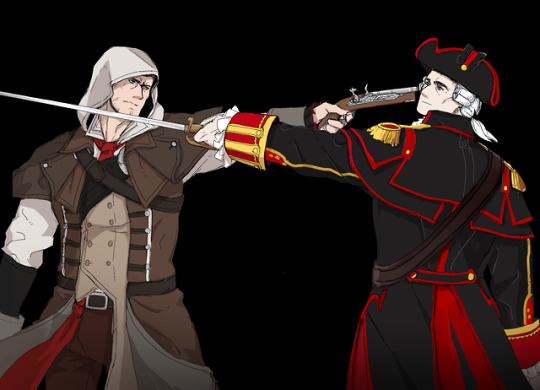Don't wanna be here? Send us removal request.
Photo
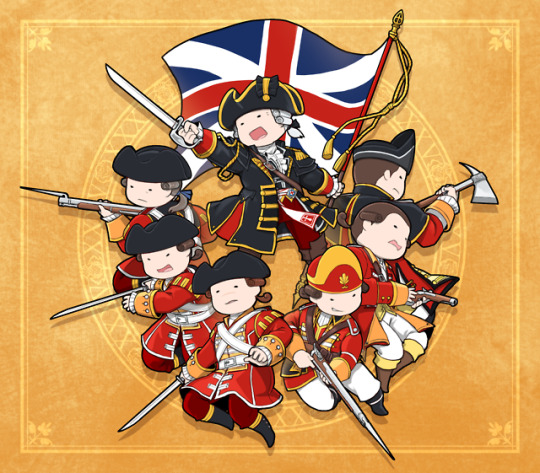
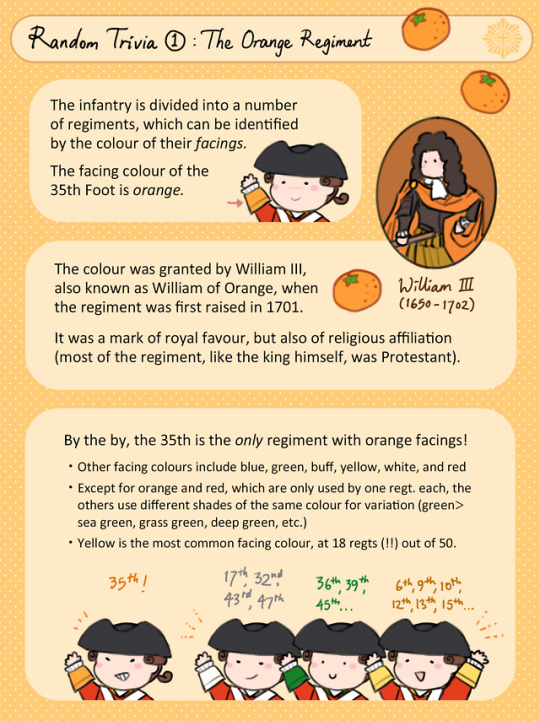
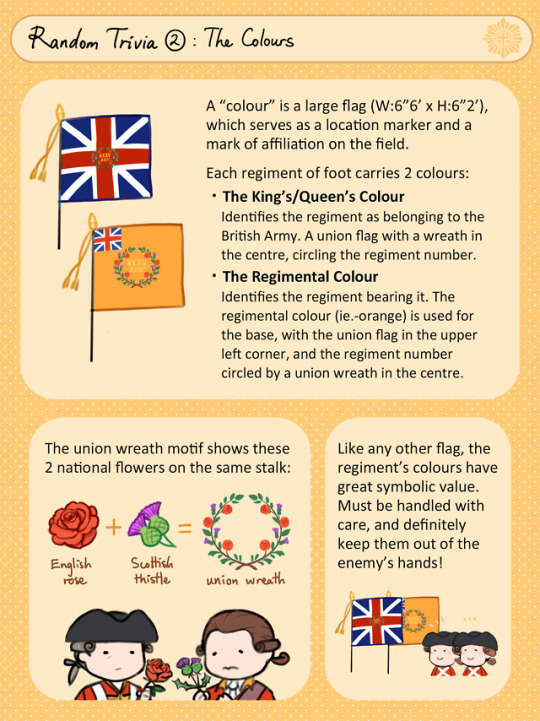
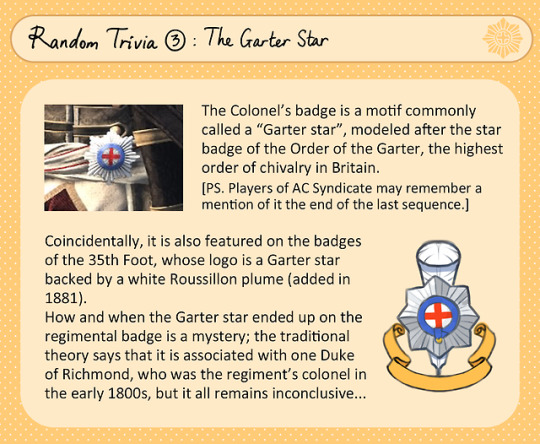
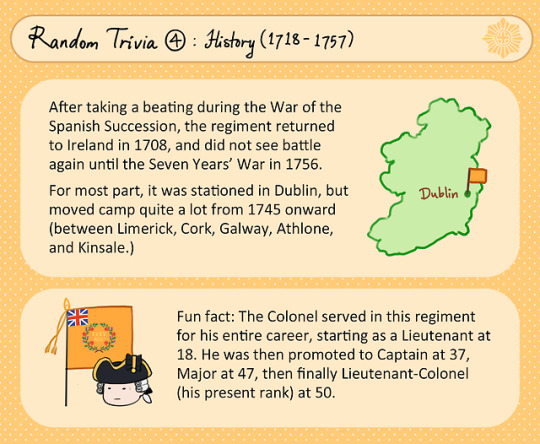
The Orange Lilies 🍊
A collection of research notes on the Colonel’s regiment.
[PS. And yes, of course the boys have names :3c]
Main sources: ① The Royal Clothing Warrant (1751) ② British Colours (1747-1815) ③ Regimental Badges ④ Historical Memoir of the 35th (1701-1873)
130 notes
·
View notes
Photo
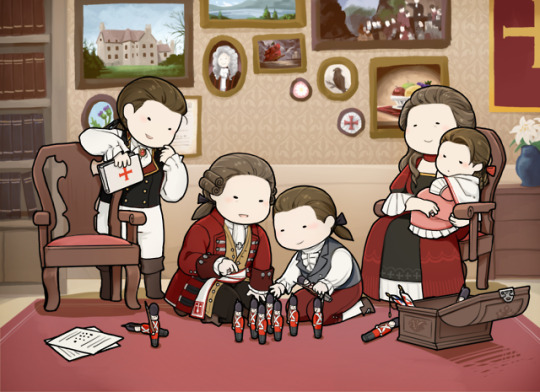
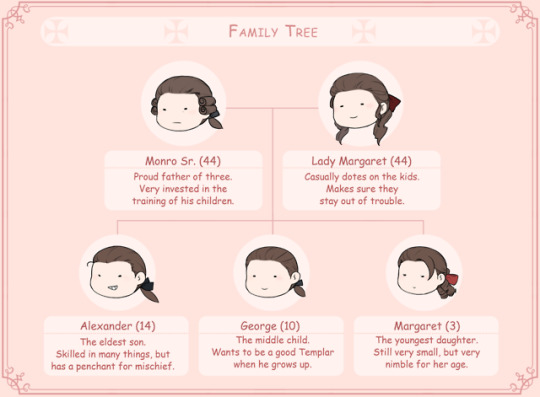
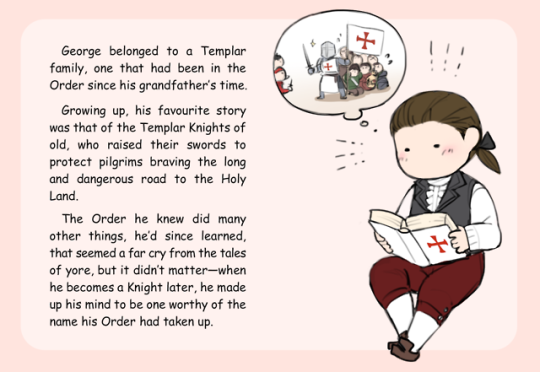
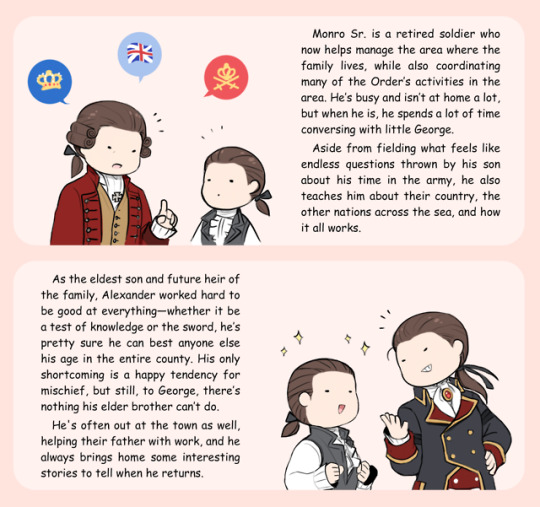
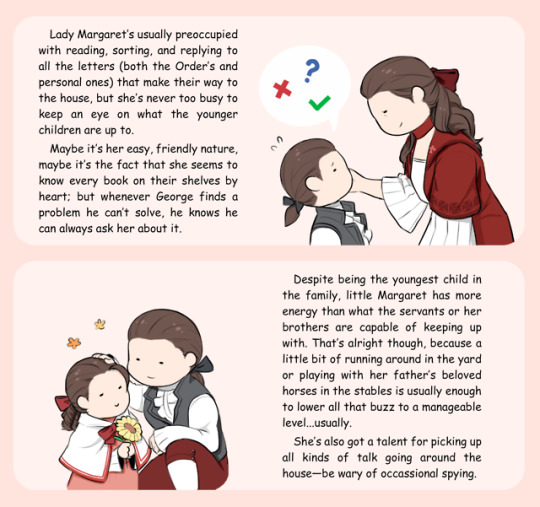
Intros for the tiny Colonel and the rest of the fam 🏡 Extended character sheets coming up next!
61 notes
·
View notes
Photo









Welcome to Regimental Structure 101! Ever find yourself wondering what exactly the Colonel’s other non-Templar workplace is like, but don’t know where to start looking? Here’s a basic primer to get you started down that path 📖
Much thanks to guest lecturer Master Declan Finnegan for helping out with beta-reading this entire stash of text, and also for lending his sqwoosh-inviting face to the light infantry company units ✨
Now then, let’s go and take a look at how a British army regiment in the 1750s works 🔍
— ✻ Asterisk Memos ✻ —
⚔️ Regimental Colonel ≠ Colonel?
While Colonel is indeed the rank right above Lieutenant Colonel, it’s not the same as Regimental Colonel, which is meant to denote “the colonel of a regiment”. This title has its origins in the 1600s, back when the concept of a national army has yet to take hold in Britain, and regiments were privately owned—colonels, who were granted royal commissions for that position, raised and equipped their regiments at their own expense. As the modernization of the army came along through the early 1700s and the state took over the business of funding its own soldiers, the title of “Regimental Colonel” came to refer to the person in charge of looking after the regiment’s interests, even if he didn’t actually own it anymore.
On a related note, this is also why the two regimental naming conventions exist simultaneously at this time: as regiments used to be their colonel’s property, referring to them as “Col. So-and-so’s regiment” came naturally. The numbering system didn’t come along until 1751, at which point a royal warrant decreed that, as part of the ongoing effort to regulate the army, every regiment was to be given a number that they would henceforth be identified with. But traditions die hard, and it was still common even afterwards for people to refer to regiments by the name of their colonel in informal correspondence.
⚔️ Ensigns and Corporals
I haven’t been able to find what exactly the groups that ensigns and corporals are called, so I’m leaving out the ensigns’ for now. In modern day parlance, corporals would lead what’s called a “squad”, but the term didn’t seem to have been used like that back in those days, so I’ve opted for “subsection” instead. Until I find the exact terms for these, I guess this will have to do 👀
[PS. The number of soldiers commanded by each rank is an estimate based on the assumption that recruiting went extremely well and everyone reached their quota! Unfortunately, this rarely seems to be the case, so treat it as an upper limit of sorts.]
⚔️ 3 Lieutenants in the Grenadier Company?
Some of you may have noticed that there are 3 lieutenants in the grenadier company, and not 2 like all the others. While each of the 10 companies in a regiment were supposed to have had 2 lieutenants each, bringing the total number of lieutenants to 20, the grenadier company in the 35th (during the Siege of Fort William Henry, which this chart’s stats are based on) had one extra lieutenant due to the fact that it had about 20-30 more soldiers in it than the other companies, creating the need for more supervising officers.
As to why this is the case, when theoretically all the companies should’ve had an equal headcount between them, is something I’ll need to prod into further. Source ② has some pretty interesting things to say about this phenomenon—you can go check it out around page 227 if you want to see what looks like the Colonel being very particularly partial to his grenadiers. :^)
Speaking of which, ensigns, otherwise known as the most junior among the officers, are also not assigned to the grenadier company. Given that the grenadiers’ primary job involves assaulting the enemy lines (and sometimes even their fort) head on, it’s highly dangerous work—not a good place for the inexperienced, officer or not.
— Sources —
① Historical Memoir of the 35th (1701-1873) ② The 35th Regiment of Foot and the British Artillery at the Siege of Fort William Henry and the Role of Lord Loudoun, James Campbell, August 1757 with not insignificant assistance from : ③ British Military History For Dummies (2007) ④ British Army Ranks - Present Day ⑤ British Army Organization - Present Day
98 notes
·
View notes
Photo


Here’s that long-overdue revision of that cast sheet attached to my first info post on the 35th, featuring the Colonel’s team! 🍊
Extended character sheets & HCs below:
Keep reading
51 notes
·
View notes
Photo
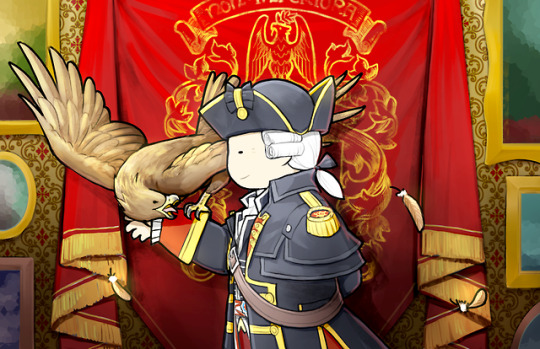
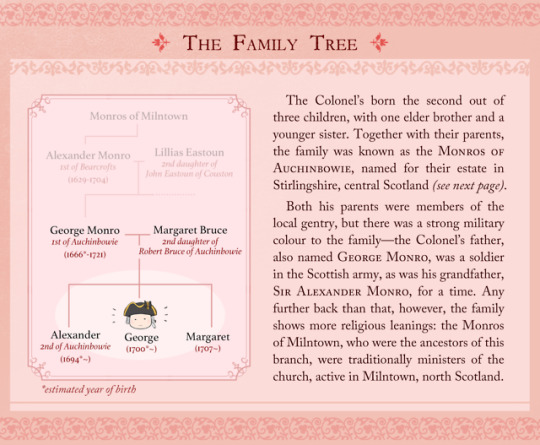
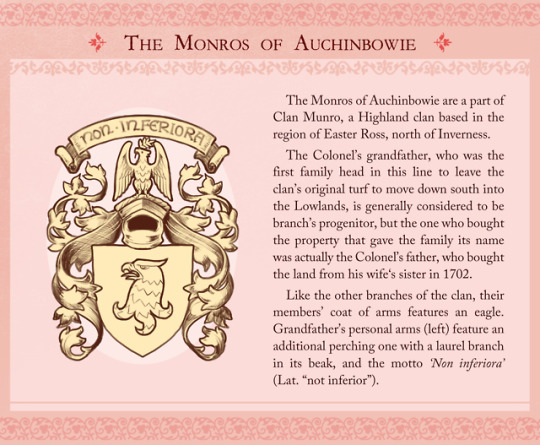
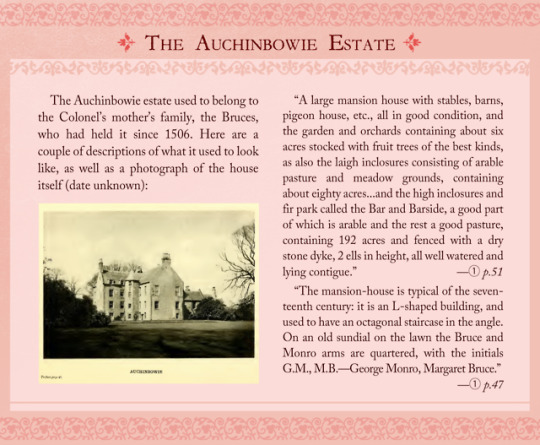
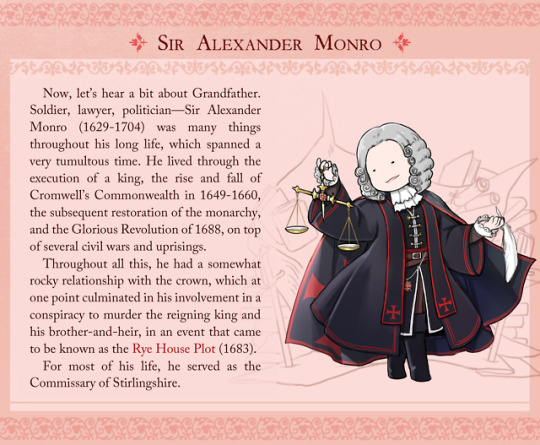
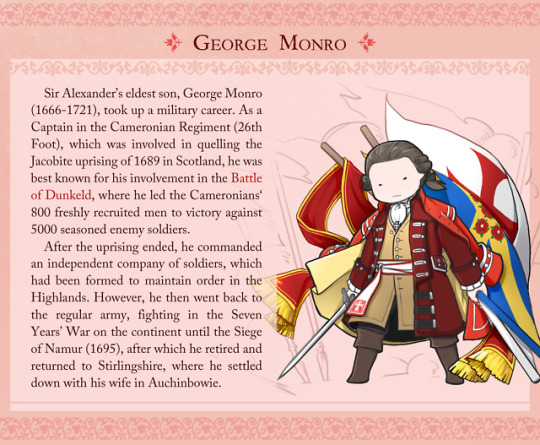
Research notes on the Colonel’s family.
✠ Memo #1: Info Shortage While this post is mostly about the family line, I can barely find any information on the immediate family members themselves, so go wild with your HCs! There’s just a little bit about Big Bro in the sources below too, though, so there’s at least that.
✠ Memo #2: Munro/Monro There are two variant spellings which are used when writing the Colonel’s name, which I recall is a cause for much confusion. The two sources below have some interesting things to say on the matter: ・Source ① (p.1) claims that “Munro” is the original spelling used by most of the clan, but the Milntown branch (the Auchinbowie branch’s ancestors) in particular uses “Monro” instead. ・Source ② (p.400) says the same thing, but added that the difference doesn’t matter much as the Scottish pronunciation of both spellings would have been practically identical. Note that both sources are by the same author, who is generally reliable, though this does limit the data range a bit. Nevertheless, these are handy observations.
✠ Memo #3: “Family Coat of Arms” Given that coats of arms are personal property, there isn’t actually a “family coat of arms”, but members of the same family tend to use similar elements in each of their own arms. As far as I know, the Colonel never registered his own, but if it exists, it should look quite like Grandfather’s, with a few modifications. eg.-Compare the arms above with one of the Colonel’s nephew’s.
[Extra!] A map with the important locations marked out, because my Scottish geography knowledge was potato and I sure as hell needed one.
Main Sources: ① The Monros of Auchinbowie and Cognate Families (1911)* ② The Lineage of Colonel George Monro (1914)
[* Source ① is an older source that mistook the Colonel for a nephew of his (same name and all), so there’s actually no information about him in there]
35 notes
·
View notes
Photo



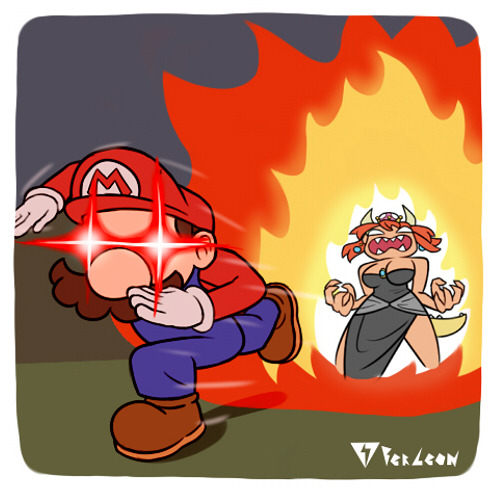
Wanted to make the two Bowsette’s color palettes (that rhymed) be “canon” at the same time, so this is what i came up with.
4K notes
·
View notes
Text
0 notes
Text
0 notes
